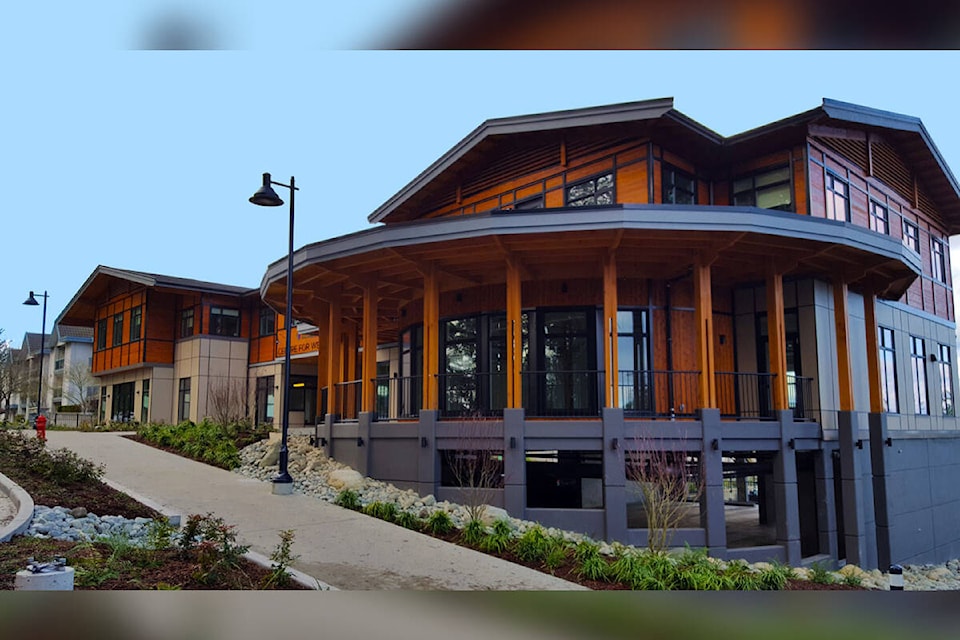The West Shore Local Hero Awards are back! You can find this year’s special feature in the March 22 edition of the Goldstream Gazette or online under e-editions. Stay tuned for more on each of this year’s honourees, you will also be able to read their stories online at goldstreamgazette.com/tag/local-hero-awards.
The Pacific Centre Family Services Association is deeply rooted on the West Shore and those who work there are happy to hear the commitment reciprocated.
Named the youth advocate of the year in the Local Hero Awards, the organization has been providing services on the West Shore since 1968.
Today, PCFSA provides a range of counselling and social services for residents across south Vancouver Island. In June 2022, the association expanded to include a new community health centre, offering low-barrier, trauma-informed, coordinated, multidisciplinary health care.
“It’s nice to be appreciated by the community and we deeply appreciate the community,” says Sara Radford, director of counselling and social services at the centre.
“It highlights the amazing counsellors we have at our agency and the hard work and dedication they offer to the community and that the community sees what I see every day – that they’re doing great things. That warms my heart tremendously.”
READ ALSO: Mind the gap: Children in crisis
The work itself is extremely meaningful, adds youth and family counsellor Julia Leggett.
“It’s a privilege and a joy to come to work.”
Pacific Centre has essentially five youth-serving programs overseen by nine counsellors with the mandate to connect with kids as young as five into young adulthood. The programs are: sexual abuse intervention; crime reduction and exploitation aversion program; community outreach and prevention education; and West Shore preventative community services.
The fifth is a side program called youth talk that offers email counselling for those under 30. Youth in need can send an email and receive a reply in three to five business days. The idea is to meet youth wherever they are – offering counselling services in a variety of ways from traditional in-office therapy to text or email, a method growing in popularity for youth, Leggett says.
It’s a low-barrier connection that often leads to in-person interactions at a coffee shop or the mall.
The pandemic – with school closures, virtual learning, isolation and fewer gatherings with family and friends – had a significant impact on mental health in youth. In late March and early April of 2020, just over 40 per cent of Canadian youth 15 to 24 reported good to excellent mental health, compared to 62 per cent two years earlier, according to Statistics Canada. It marked the most significant drop by any age group.
That corresponds with a definite uptick in anxiety locally and with that, a rise in depression, says Leggett, who sees two coinciding issues.
The world is less stable than it used to be, with massive changes and instability and fewer social skills in a sense, with people increasingly communicating through a screen. Society is also more open about mental health, which encourages kids to talk about it.
“In the past, there were probably a lot more silent sufferers,” Leggett said.
Society trends contribute to the concern. On the West Shore, high-risk youth are affected by poverty, inflation, the housing crisis, stress at home and easy access to drugs and alcohol to cope. Exploiters also have increasingly easier access to connect with vulnerable youth – and they cast a wide net using social media.
Recent years have shown a clear increase in the demand, Radford said. “We carry a wait list of kids waiting for support with counsellor.”
The models are short-term programs and it’s common for a kid to go through support then go back on the waiting list for more no-cost support.
“Trying to find a private counsellor, and then having to pay for that, can be a huge barrier to getting kids the help that they need,” Radford said.
Over the last year, staff served 776 children and youth across the five programs, while also offering support to families, youth and schools through workshops and presentations. Their waiting list is routinely beyond 80 kids. The organization is limited by grants and contracts but the ever-growing need can leave parents, school system and community feeling the stress.
“We could definitely use more resources, but I think the community could use more resources,” Radford said. “It’s the kiddos that are impacted.”
READ MORE: 2023 Local Hero Awards
Do you have a story tip? Email: newsroom@goldstreamgazette.com.
Follow us on Twitter and Instagram, and like us on Facebook.
